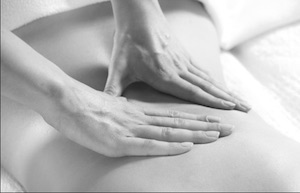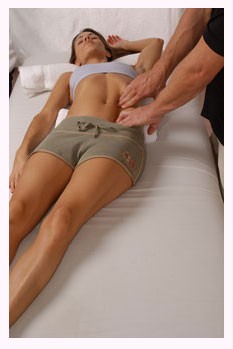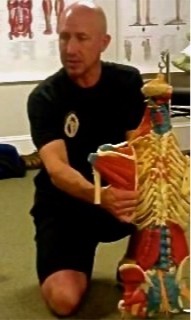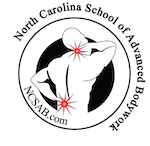Differences Between Massage and Bodywork
– Your Enhanced Therapy Skills
What ARE the differences between massage and bodywork? Our Clinical / Medical Massage Therapy School teaches you the full spectrum of techniques so you can work in the professional environment you prefer.
 Most massage therapists practice one or more forms of massage that are very relaxing and healthful, yet general in nature. While modalities like Swedish Massage and Asian Bodywork are very useful and valuable in many settings, there is a difference.
Most massage therapists practice one or more forms of massage that are very relaxing and healthful, yet general in nature. While modalities like Swedish Massage and Asian Bodywork are very useful and valuable in many settings, there is a difference.
NCSAB is primarily a CLINICAL / Medical Massage Therapy School. Our main focus is on you becoming a clinical, soft tissue specialist in managing and resolving significant pain, posture, movement, and dysfunction issues for which many people have not found relief.
YET, in addition to our Leading Edge Medical Massage Therapy Training, you’ll receive an excellent education in the skills of Swedish Massage, the more relaxing type of full body massage with oils and all that. This is all great and useful stuff, especially if you want to work in a spa setting or a franchise massage center.
Full-body Swedish Massage might well be the original basis for most massage in America. Our highly accomplished Swedish Massage Instructor will provide you with top-of-the line education in full body, therapeutic massage. You’ll be very skilled in these modalities when you finish your program.
Yet upon graduating, you’ll have more to offer … much more! … And you’ll learn the differences between massage and bodywork, and when to use one or the other, or a combination of the two.
 Our Clinical / Medical Massage Therapy & Myo-Structural Bodywork training are very different therapeutic disciplines compared to Swedish and other Asian or “Energy” related therapies. We are primarily focused on Western, science-based and medical approaches for the millions of people suffering from acute and chronic pain, injury and trauma related issues.
Our Clinical / Medical Massage Therapy & Myo-Structural Bodywork training are very different therapeutic disciplines compared to Swedish and other Asian or “Energy” related therapies. We are primarily focused on Western, science-based and medical approaches for the millions of people suffering from acute and chronic pain, injury and trauma related issues.
We also provide you with skills for achieving optimum physical performance for clients such as athletes, construction workers and others who use their bodies in their work or other activities on a frequent or daily basis.
One example is the dental hygienist who’s sitting in a twisted and distorted body posture under high levels of stress, for many hours every day. Such work produces many muscular imbalances, in turn creating various aches, pains and other dysfunction.
Or musicians who don’t necessarily have very high levels of physical stress to their muscles in short bursts, but do many thousands or millions of smaller, even tiny, movements that accumulate over time. That can add up to injuries similar to athletic injuries.
And those who are not in pain, yet want better posture, movement, balance and coordination, will be amazed at the results you produce. There is also an entire market in corporate and industrial America for working with clients who must sit in front of computers or run machinery all day long, suffering from poor posture and repetitive strain injuries.
 Our Clinical / Medical Massage Therapy School provides you the ability to understand and effectively identify and manipulate the soft tissues of the body for the purpose of reducing chronic, excess muscle and nerve tension and stress, contributing to the onset of pain and dysfunction.
Our Clinical / Medical Massage Therapy School provides you the ability to understand and effectively identify and manipulate the soft tissues of the body for the purpose of reducing chronic, excess muscle and nerve tension and stress, contributing to the onset of pain and dysfunction.
This field of study offers an in-depth look at the various causes, symptoms and conditions of muscle tension and the principles to reverse that tension and stress.
Myo-Structural Bodywork scientifically tracks down the aches, pains, and dysfunctions not sufficiently responsive to the usual localized treatment (at the location of symptoms) of neuromuscular and myofascial structures. Then you’ll use the Myo-Structural Bodywork Release Techniques to reduce or eliminate tension in the Client’s musculoskeletal-fascial units.
When you add the scientific elements of clinical / medical massage therapy and myo-structural bodywork to our No Pain, More Gain “Edge” Technique and Structural Analysis Strategies, you’ll get the most results in the widest range of myofascial and neuro-structural syndromes. And though Western in nature, we believe, our approach is a no less of a “conscious” system than some of the more esoteric modalities out there.
These elements will be a primary focus of your training, including the important differences between massage and bodywork, and upon graduation from NCSAB, you’ll be prepared for private practice or employment in many settings.
Learn How Kyle C. Wright developed his approach to doing and teaching therapy at his website.

